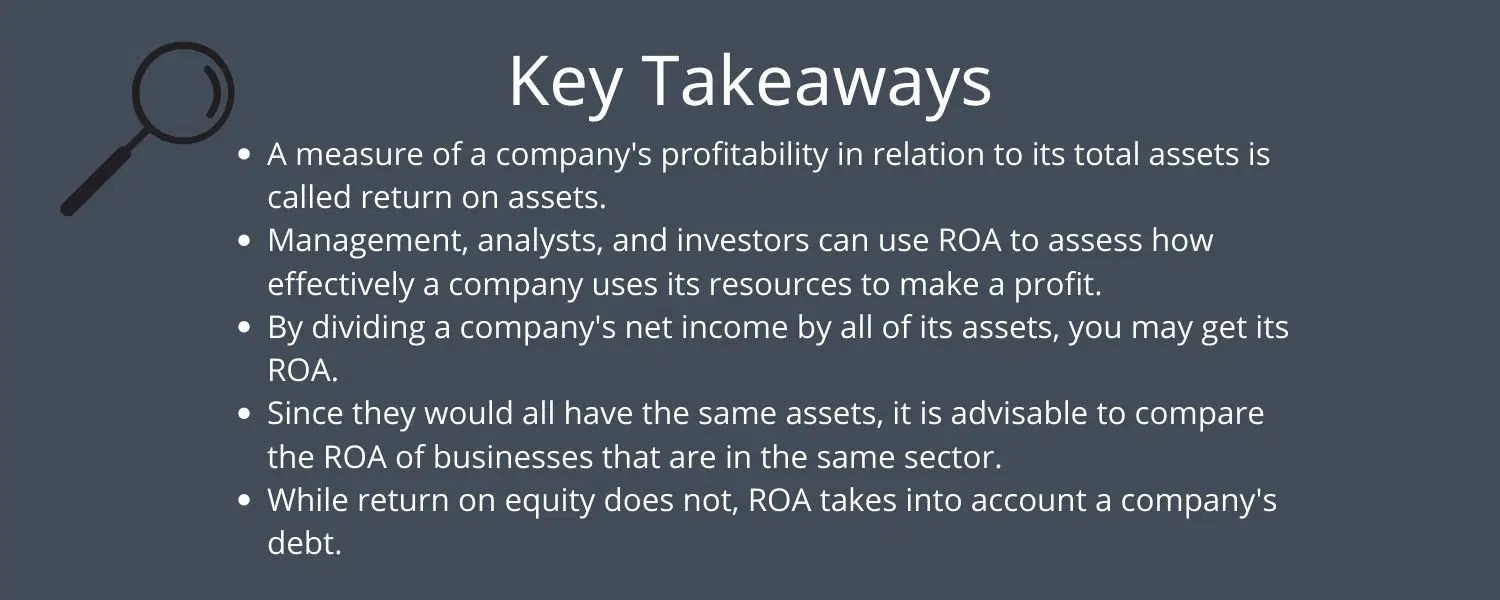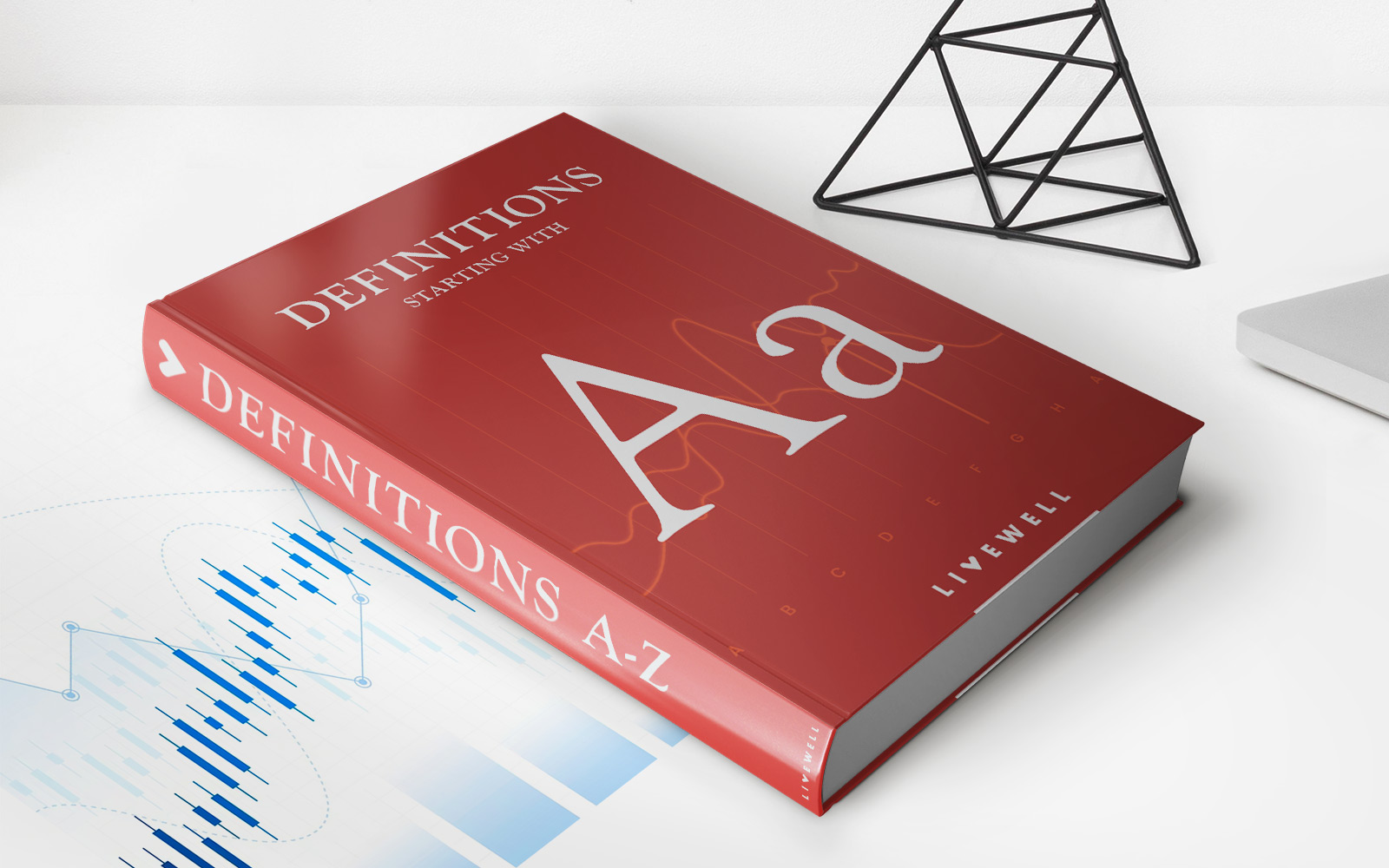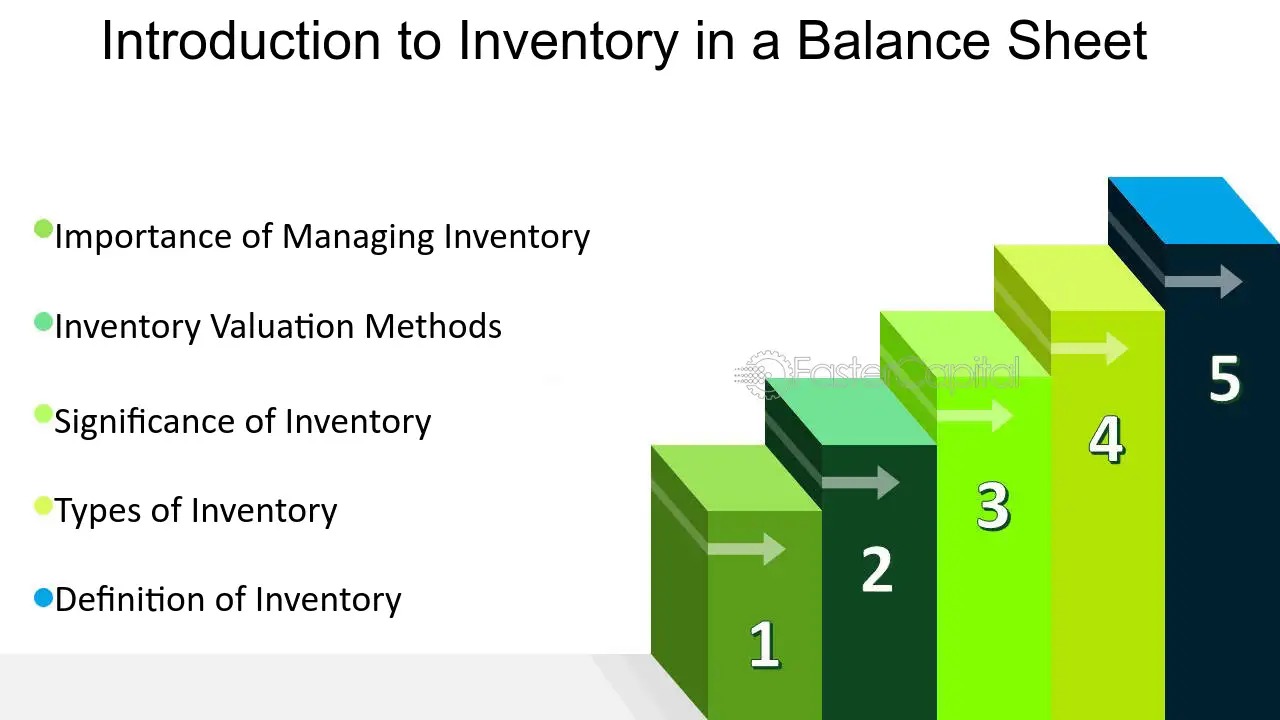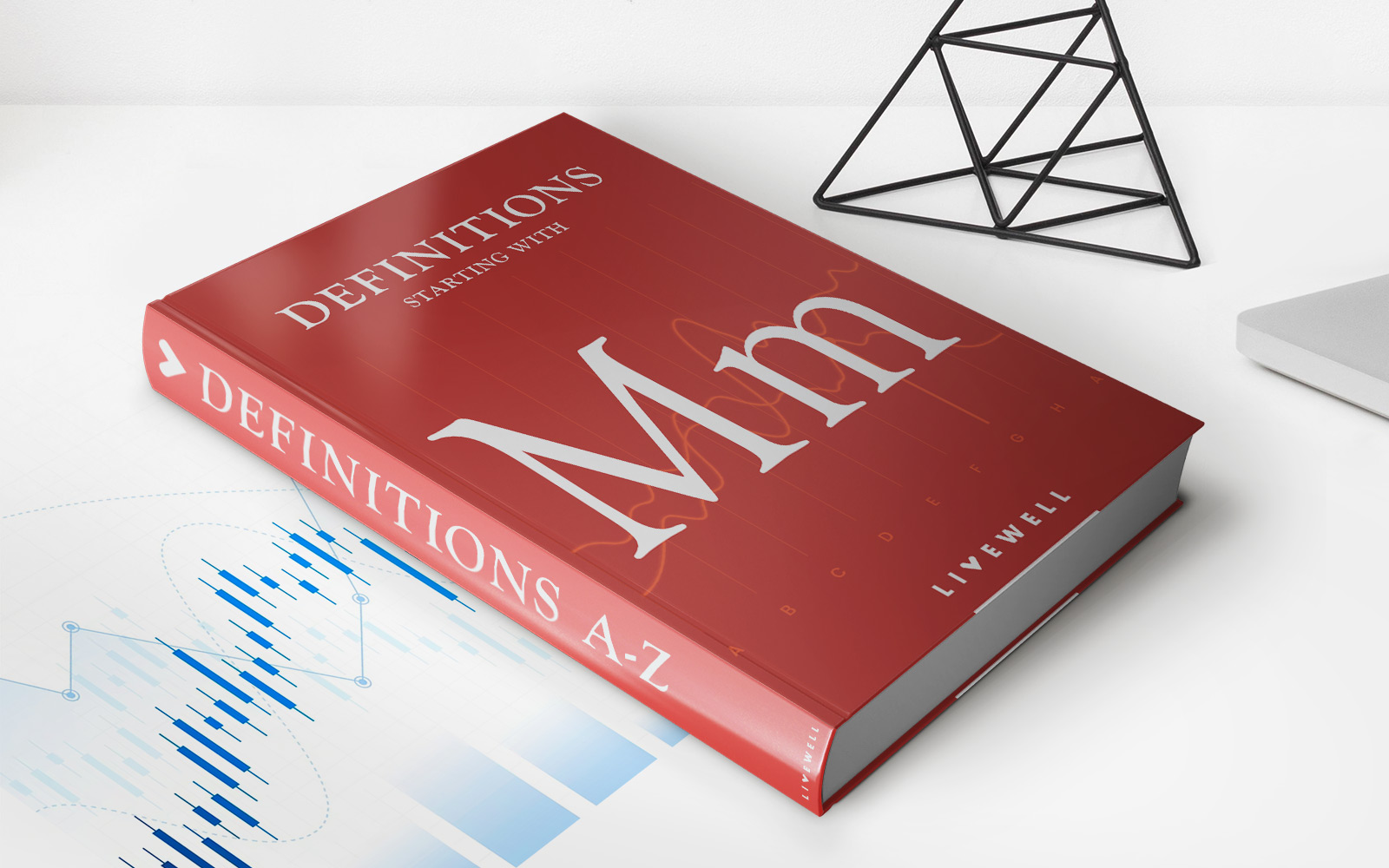Home>Finance>How Is A Student Loan Different From A Scholarship?


Finance
How Is A Student Loan Different From A Scholarship?
Published: October 20, 2023
Get a clear understanding of the key differences between student loans and scholarships. Learn about how they work and how they impact your finances.
(Many of the links in this article redirect to a specific reviewed product. Your purchase of these products through affiliate links helps to generate commission for LiveWell, at no extra cost. Learn more)
Table of Contents
- Introduction
- Definition of Student Loan
- Definition of Scholarship
- Key Differences Between Student Loan and Scholarship
- Repayment Requirements for Student Loans
- Eligibility Criteria for Student Loans and Scholarships
- Application Process for Student Loans and Scholarships
- Pros and Cons of Student Loans
- Pros and Cons of Scholarships
- Conclusion
Introduction
When it comes to pursuing higher education, many students find themselves facing a common dilemma: how to finance their studies. While there are various options available to obtain financial assistance, two popular choices are student loans and scholarships. However, it is important to understand the key differences between these two forms of financial aid and the implications they have on students’ future financial obligations.
A student loan is a type of financial aid that is borrowed from a lending institution, such as a bank or a government program, to cover the cost of tuition, books, and other educational expenses. The loan typically accrues interest, and repayment is required after graduation or when the student is no longer enrolled in school on a full-time basis.
A scholarship, on the other hand, is a form of financial aid that does not require repayment. It is typically awarded to students based on merit, financial need, or specific criteria set by the scholarship provider. Scholarships can come from various sources, including universities, private organizations, or government entities.
Understanding the differences between student loans and scholarships is crucial, as it can greatly impact a student’s financial situation during and after their educational journey. In this article, we will delve deeper into the key distinctions between student loans and scholarships, including repayment requirements, eligibility criteria, application processes, and the pros and cons of each option. By understanding these differences, students can make informed decisions about how to fund their education and manage their financial obligations in the future.
Definition of Student Loan
A student loan is a financial tool designed to assist students in financing their education. It is a form of borrowing that must be repaid over time, typically with interest. Student loans are offered by various lending institutions, including banks, credit unions, and government programs.
When students take out a student loan, they agree to borrow a specified amount of money to cover educational expenses, such as tuition, books, housing, and other related costs. The terms and conditions of the loan, including the interest rate, repayment period, and monthly installment, are agreed upon by both the borrower and the lender.
One key feature of student loans is that they generally have a grace period, which is a period of time after graduation or when the student is no longer enrolled in school on a full-time basis before the repayment begins. During the grace period, students are not required to make loan payments, and the loan may continue to accrue interest.
Student loans can be classified into two main categories: federal student loans and private student loans. Federal student loans are issued by the federal government and typically offer more favorable terms and conditions, such as lower interest rates and flexible repayment options. Private student loans, on the other hand, are offered by private lenders and may have higher interest rates and more rigid repayment terms.
It’s important to note that student loans are a financial liability and should be managed responsibly. Failing to repay student loans can have serious consequences, such as negatively impacting credit scores, incurring additional fees and penalties, and even potential legal action by the lender.
Overall, student loans can provide the necessary funding for pursuing higher education, but they should be carefully considered and managed to avoid unnecessary financial burden in the future.
Definition of Scholarship
A scholarship is a form of financial aid that is awarded to students to support their education. Unlike student loans, scholarships do not require repayment and are often based on various factors, such as academic achievement, athletic or artistic ability, community service, or specific criteria set by the scholarship provider.
Scholarships can be offered by a variety of sources, including universities, private organizations, corporations, foundations, or government entities. They are typically awarded through a competitive selection process, where applicants are evaluated based on their qualifications and eligibility.
There are several types of scholarships, including merit-based scholarships, need-based scholarships, athletic scholarships, and specific scholarships for underrepresented groups or individuals pursuing certain fields of study. Each scholarship has its own set of eligibility requirements and application process.
Merit-based scholarships are awarded to students who demonstrate exceptional academic achievements, such as high GPA or standardized test scores. Need-based scholarships, on the other hand, are awarded to students who demonstrate financial need based on their family’s income and assets.
Athletic scholarships are awarded to student-athletes who excel in a particular sport and demonstrate potential for success at the collegiate level. These scholarships often cover tuition, fees, and sometimes even room and board.
Applying for scholarships typically involves submitting an application package that includes personal information, academic records, recommendation letters, essays, and sometimes an interview or audition. The selection committee or scholarship provider then reviews the applications and selects the recipients based on the criteria outlined.
Receiving a scholarship can greatly reduce the financial burden of pursuing higher education. It can cover some or all of the costs associated with tuition, books, housing, and other related expenses. Scholarships can also provide recognition and prestige, which can be beneficial for future career opportunities.
However, it’s important to note that scholarships often come with certain requirements and expectations, such as maintaining a minimum GPA or participating in specific activities. Failure to meet these requirements may result in the loss of the scholarship.
Overall, scholarships are a valuable form of financial aid that can provide students with the means to pursue their educational goals without the burden of repayment.
Key Differences Between Student Loan and Scholarship
While both student loans and scholarships are forms of financial aid to help students pay for their education, there are several key differences between the two. Understanding these differences can help students make informed decisions about which option is most suitable for their needs.
- Repayment: One of the primary differences between a student loan and a scholarship is the repayment requirement. A student loan must be repaid over time, typically with interest, after a grace period or once the student is no longer enrolled in school on a full-time basis. On the other hand, scholarships do not require repayment. They are essentially grants that students receive to cover educational expenses without the obligation of future repayment.
- Criteria for Award: Student loans are generally available to all students who meet the eligibility criteria, regardless of their academic or personal background. Scholarships, however, are often awarded based on specific criteria, such as academic excellence, financial need, athletic or artistic abilities, or community involvement. These criteria vary depending on the scholarship provider and may be highly competitive.
- Availability: Student loans are widely available through various lending institutions, including banks, credit unions, and government programs. They can typically be accessed by students regardless of their financial situation. Scholarships, on the other hand, may have limited availability and specific requirements. They are often awarded to a smaller pool of individuals who meet the specific criteria set by the scholarship provider.
- Interest and Fees: Student loans generally accrue interest, which increases the overall amount that must be repaid. The interest rates may vary depending on the type of loan and the lending institution. In contrast, scholarships do not accrue interest, as they are grants with no repayment requirement. However, some scholarships may have certain fees associated with them, such as application fees or administrative fees.
- Financial Obligation: Taking out a student loan creates a financial obligation for the borrower. They must repay the loan according to the agreed-upon terms, which can have a significant impact on their financial situation after graduation. Scholarships, being grants, do not impose any financial obligation on the recipient, allowing them to focus on their studies without the burden of loan repayment.
It’s important for students to carefully consider these differences when deciding between a student loan and a scholarship. While both forms of financial aid can help cover educational expenses, they come with distinct implications for future financial obligations, eligibility criteria, and availability. By understanding these key differences, students can make informed decisions based on their individual circumstances and financial goals.
Repayment Requirements for Student Loans
One of the significant differences between student loans and scholarships is the repayment requirement associated with student loans. Repayment terms and conditions can vary depending on the type of loan and the lending institution. Understanding the repayment requirements is crucial for borrowers to effectively manage their financial obligations after graduation. Here are some key aspects of repayment requirements for student loans:
- Grace Period: Most student loans have a grace period, which is a designated period of time after graduation or when the student is no longer enrolled in school on a full-time basis, during which loan repayment is not required. The length of the grace period can vary, but it usually ranges from six to nine months. This grace period provides borrowers with time to secure employment and establish their finances before starting to make loan payments.
- Repayment Plans: Student loan borrowers often have various repayment plan options to choose from. These plans determine the amount of the monthly loan payment and the duration of the repayment period. Common repayment plans include standard repayment, graduated repayment, income-based repayment, and extended repayment. Each plan has its own benefits and considerations, such as fixed or variable monthly payments and different repayment terms.
- Interest Rates: Student loans accrue interest over time, increasing the total cost of the loan. The interest rate on student loans can be fixed or variable. Federal student loans generally have fixed interest rates, meaning that the interest rate remains the same throughout the repayment period. Private student loans, on the other hand, may have fixed or variable interest rates, which can change based on market conditions or other factors. It’s important for borrowers to understand the interest rates on their loans and how they affect overall repayment.
- Loan Repayment Period: The length of the repayment period for student loans varies depending on the loan type and repayment plan chosen. It can range from 10 to 25 years or even longer in some cases. The longer the repayment period, the lower the monthly loan payments might be, but it can also result in higher interest charges over time. Borrowers should carefully consider the length of the repayment period and the total interest to be paid when selecting a repayment plan.
- Consequences of Non-Repayment: Failing to repay student loans can have serious consequences. Missing loan payments or defaulting on the loan can negatively impact credit scores, making it harder to borrow money in the future. It can also lead to additional fees, penalties, and even legal action by the lender. Borrowers should work with their loan servicers to explore options such as deferment, forbearance, or income-driven repayment plans if they are struggling to make loan payments.
Understanding the repayment requirements for student loans is crucial for borrowers to effectively manage their finances and fulfill their financial obligations. It’s essential to stay organized, make timely payments, and explore available options for loan repayment assistance if needed. By responsibly managing their student loan repayment, borrowers can successfully navigate their financial journey after completing their education.
Eligibility Criteria for Student Loans and Scholarships
When it comes to obtaining financial aid for education, both student loans and scholarships have specific eligibility criteria that students must meet. These criteria determine whether students are eligible to receive the funds and vary depending on the type of loan or scholarship. Understanding the eligibility requirements is essential for students to determine their eligibility and effectively pursue the financial aid option that best suits their needs. Here are some key aspects of the eligibility criteria for student loans and scholarships:
- Student Loans: The eligibility criteria for student loans are generally more straightforward compared to scholarships. To be eligible for most student loans, students must meet the following criteria:
- Enrollment: Students must be enrolled at least half-time in an accredited educational institution.
- Citizenship/Residency: Typically, student loans are available to U.S. citizens or eligible non-citizens. Some loans may have specific residency requirements.
- Financial Need: Some student loans, particularly need-based federal loans, require students to demonstrate financial need, which is determined by completing the Free Application for Federal Student Aid (FAFSA).
- Default Status: Students should not be in default on any existing federal student loans.
- Other Requirements: Additional requirements may exist depending on the type of loan, such as maintaining satisfactory academic progress and not having a prior drug conviction.
- Scholarships: Scholarship eligibility criteria can vary significantly depending on the scholarship provider and the specific scholarship. Some common eligibility factors for scholarships include:
- Academic Achievement: Many scholarships are based on academic merit and require a minimum GPA or standardized test scores.
- Financial Need: Some scholarships are need-based and require students to demonstrate financial need through the completion of the FAFSA or other financial aid applications.
- Personal Background: Certain scholarships are targeted towards specific groups, such as underrepresented minorities, first-generation college students, or students pursuing specific fields of study.
- Extracurricular Involvement: Scholarships may consider a student’s involvement in extracurricular activities, leadership roles, community service, or special talents in areas such as sports or the arts.
- Essay or Interview: Some scholarships require applicants to write an essay or participate in an interview to evaluate their eligibility and suitability for the scholarship.
It is important for students to carefully review and understand the eligibility criteria for student loans and scholarships before applying. This will ensure that they meet the necessary requirements and increase their chances of securing financial aid. Additionally, students should explore multiple sources of scholarships and student loans to maximize their opportunities for obtaining funding. By understanding the eligibility criteria, students can navigate the application process more effectively and increase their chances of receiving financial aid to support their education.
Application Process for Student Loans and Scholarships
The application process for student loans and scholarships can vary based on the type of financial aid and the specific requirements of the lending institution or scholarship provider. Understanding the application processes for both can help students navigate the necessary steps to secure education funding. Here are some key aspects of the application process for student loans and scholarships:
- Student Loans:
- Research Loan Options: Start by researching different types of student loans, such as federal loans or private loans. Understand the terms, interest rates, and repayment options associated with each loan.
- Complete the FAFSA: To apply for federal student loans and many scholarships, students must complete the Free Application for Federal Student Aid (FAFSA). The FAFSA collects financial information that helps determine eligibility for need-based aid.
- Review Loan Terms: Once the FAFSA is processed, students will receive a Student Aid Report (SAR) that provides information about their eligibility for federal student loans. This report also includes the Expected Family Contribution (EFC), which institutions may use to determine financial aid packages.
- Apply for Private Loans: If students require additional funds beyond what federal loans offer, they can choose to apply for private student loans through banks or credit unions. Private loan applications typically require information on income, credit history, and a co-signer, if applicable.
- Research Repayment Options: Before accepting a student loan, review the repayment options available. Federal loans often offer more flexible repayment plans, such as income-driven repayment, while private loans may have stricter terms.
- Scholarships:
- Research Scholarships: Begin by researching and identifying scholarships that align with your criteria, such as academic performance, field of study, or personal background. Utilize online scholarship search engines, university scholarship databases, and other resources.
- Review Application Criteria: Carefully review the eligibility criteria and requirements for each scholarship. Pay attention to deadlines, essay prompts, recommendation letters, or any other documentation needed for the application.
- Gather Required Documents: Organize the necessary documents, such as academic transcripts, letters of recommendation, personal statements, and any other materials specified by the scholarship provider.
- Prepare Application Materials: Customize your application materials, ensuring that they align with the scholarship requirements. Pay attention to formatting, grammar, and presentation to make a strong impression.
- Submit Applications: Follow the specified application submission process, whether it’s through an online portal, email, or mailing physical copies. Be mindful of deadlines and ensure all required documents are included.
- Follow Up: After submitting applications, periodically check for updates or correspondence from the scholarship provider. Be prepared for potential interviews or additional requests for information.
It’s important for students to stay organized throughout the application process and keep track of deadlines and submission requirements. Applying for student loans and scholarships can be competitive, so starting early, giving attention to detail, and seeking guidance from financial aid offices or scholarship advisors can greatly increase the chances of obtaining the desired financial aid for education.
Pros and Cons of Student Loans
Student loans can provide much-needed financial assistance to fulfill educational aspirations, but they also come with several pros and cons. Understanding these advantages and disadvantages can help students make informed decisions about taking on student loan debt. Here are the pros and cons of student loans:
- Pros:
- Access to Education: Student loans enable students who may not have the necessary funds upfront to pursue higher education and achieve their academic goals.
- Flexible Repayment Options: Federal student loans offer a range of repayment plans, including income-driven repayment, which adjusts monthly payments based on income and family size, and allows for loan forgiveness after a certain period.
- Building Credit: Successfully managing student loan payments can help students build a positive credit history, which can be beneficial for future financial endeavors, such as applying for a mortgage or car loan.
- Opportunity for Gradual Repayment: Student loans typically provide students with a grace period after graduation before repayment begins, giving them time to secure employment and establish their finances.
- Investment in Career: Taking out student loans can be seen as an investment in one’s future career prospects, as higher education can lead to better job opportunities and higher earning potential over time.
- Cons:
- Accrued Interest: Over time, student loans accrue interest, increasing the total amount owed. This can result in higher repayment amounts and additional costs over the life of the loan.
- Financial Burden: Depending on the amount borrowed and the chosen repayment plan, student loan payments can become a significant financial burden. High monthly payments can impact a borrower’s ability to meet other financial goals or manage living expenses.
- Long-Term Debt: Student loans can be an extended financial commitment, with repayment periods ranging from 10 to 25 years or more. Borrowers may find themselves carrying student loan debt for a significant portion of their adult lives.
- Limited Flexibility: Unlike other types of debt, such as credit card or personal loans, student loans generally cannot be discharged through bankruptcy, making them a long-term financial obligation.
- Risk of Default: Failing to make student loan payments can have severe consequences, including a negative impact on credit scores, potential wage garnishment, and difficulty securing future loans.
It is important for students to carefully consider the pros and cons of student loans before taking on debt. While student loans can be a valuable tool for accessing education and achieving career goals, borrowers should be mindful of their borrowing choices, explore all available options for scholarships and grants, and have a realistic understanding of their future repayment obligations.
Pros and Cons of Scholarships
Scholarships offer students a valuable opportunity to receive financial aid for their education without the burden of repayment. However, like any form of financial assistance, scholarships come with both pros and cons. Understanding these advantages and disadvantages can help students decide whether pursuing scholarships is the right option for them. Here are the pros and cons of scholarships:
- Pros:
- Financial Assistance: Scholarships provide financial assistance that does not require repayment, helping to alleviate the financial burden of tuition, fees, and other educational expenses.
- Recognition and Prestige: Being awarded a scholarship can bring recognition and prestige, which can enhance a student’s academic and professional profile, opening doors to additional opportunities.
- Merit-Based Awards: Many scholarships are based on merit, rewarding students for their exceptional academic achievements, talents, leadership abilities, or community involvement.
- Access to Education: Scholarships can make education more accessible to a broader range of students, regardless of their financial background, encouraging diversity and inclusivity in higher education.
- Reduced Financial Burden: By receiving scholarships, students can reduce or eliminate the need for student loans, reducing their overall debt burden upon graduation.
- Cons:
- Competitive Nature: Scholarships can be highly competitive, as many students vie for limited scholarship funds. Obtaining a scholarship may require meeting rigorous eligibility criteria and outshining other qualified applicants.
- Specific Requirements: Scholarships often come with specific requirements, such as maintaining a certain GPA, participating in certain activities, or pursuing a specific field of study. These requirements can restrict a student’s academic or career choices.
- Limited Availability: While there are numerous scholarships available, the availability of scholarships specific to a student’s qualifications or circumstances may be limited. Students must invest time and effort in researching and identifying suitable scholarship opportunities.
- Additional Application Process: Applying for scholarships often requires a separate application process, which can include writing essays, obtaining recommendation letters, and preparing additional documentation. This requires additional time and effort on the part of the student.
- Uncertain Renewal: Some scholarships are renewable for multiple years, but the renewal may depend on meeting specific criteria or maintaining academic performance throughout the duration of the scholarship. Students must ensure they fulfill the necessary requirements to continue receiving funding.
Students should weigh the pros and cons of scholarships carefully, considering their individual circumstances, goals, and available options. Scholarships can provide excellent opportunities for financial assistance and recognition, but it is important to be realistic about the competitiveness and requirements associated with them. By understanding the advantages and disadvantages, students can make informed decisions about pursuing scholarships as a means of funding their education.
Conclusion
When it comes to financing higher education, students often have a choice between student loans and scholarships. Both options can provide valuable financial assistance, but they differ significantly in terms of repayment requirements, eligibility criteria, and application processes.
Student loans offer a means of accessing funds to cover educational expenses but come with the obligation of repayment over time. They can be a useful tool for those who need financial assistance but should be managed responsibly to avoid long-term debt and negative financial consequences.
On the other hand, scholarships provide a form of financial aid that does not require repayment. They are awarded based on merit, financial need, or specific criteria and can significantly reduce the financial burden of education. Scholarships offer recognition, prestige, and increased access to educational opportunities.
It is essential for students to carefully consider their options and the potential implications of student loans and scholarships. Students should research and evaluate different student loan options, understand the repayment terms, and consider the potential long-term financial impact.
Similarly, students should explore scholarship opportunities, ensuring they meet the eligibility criteria and submit strong applications. Scholarships can provide financial assistance, recognition, and the possibility of a debt-free education.
Ultimately, the choice between student loans and scholarships is a personal one, based on individual circumstances, financial goals, and available resources. Students may choose to utilize both options, combining responsible loan borrowing with scholarship funding, or prioritize one over the other.
Regardless of the path chosen, it is important for students to approach student loans and scholarships with responsible financial management practices. Keeping track of loan details, making timely repayments, and actively seeking scholarship opportunities can help students navigate their educational journey and achieve their academic and career aspirations.
By understanding the differences, advantages, and disadvantages of student loans and scholarships, students can make informed decisions, maximize their financial aid options, and pave the way for a successful and rewarding educational experience.














